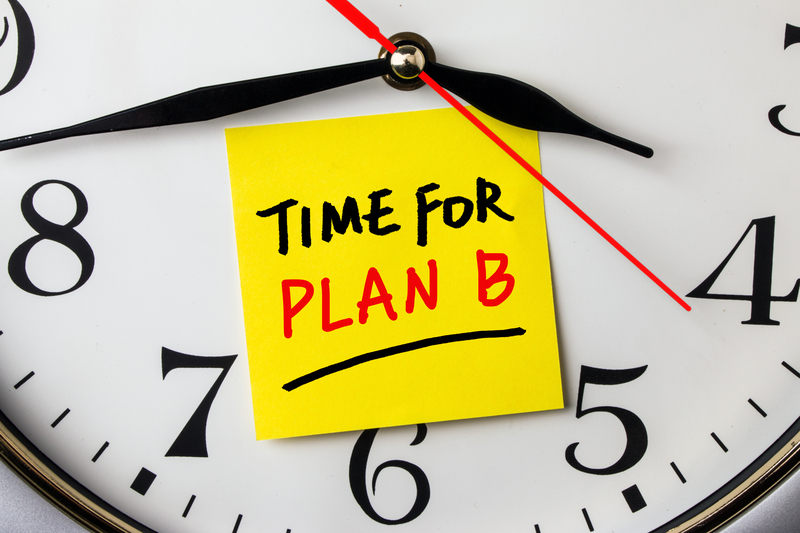Smart Packing Strategies for a Stress-Free Move
Posted on 21/05/2025
Smart Packing Strategies for a Stress-Free Move
Moving to a new home can be both exciting and daunting. Whether you're relocating across the city or moving long-distance, the process of packing can easily become overwhelming if not properly managed. Fortunately, implementing smart packing strategies not only streamlines your move but also helps maintain your sanity. In this comprehensive guide, we'll explore effective smart packing strategies for a stress-free move that ensure your belongings are safe, organized, and easy to unpack in your new home.

Why Smart Packing Matters
Poor packing leads to misplaced items, damaged belongings, and unnecessary stress. By contrast, systematic and thoughtful packing saves you time, money, and energy on moving day and during unpacking. Employing the best smart packing strategies lays the groundwork for a smooth, efficient, and stress-free move.
Preparing for the Packing Process
1. Create a Moving Checklist
Before you begin packing, organize your move with a detailed checklist. A moving checklist helps keep you on track, breaks down tasks into manageable pieces, and ensures nothing is forgotten. Include tasks such as:
- Decluttering each room
- Purchasing packing supplies
- Labelling boxes
- Arranging for utilities to be switched
- Booking movers or rental trucks
Check off items as you complete them to keep your move on schedule.
2. Gather Quality Packing Supplies
Using the right packing supplies is crucial for safeguarding your items during transit. Avoid last-minute runs to the store by preparing in advance. Stock up on:
- Sturdy moving boxes in various sizes
- Packing tape and dispensers
- Bubble wrap and packing paper
- Stretch wrap and furniture covers
- Labels and permanent markers
- Scissors and box cutters
- Ziplock bags for small items
Tip: Invest in specialty boxes for fragile items such as dishes, wardrobe clothes, or electronics to enhance protection.
Declutter Before You Pack
3. Sort and Purge
Packing is the perfect opportunity to declutter your home and eliminate items you no longer need. Less clutter means fewer boxes to move and unpack, reducing both costs and stress.
- Designate "keep," "donate," "sell," and "discard" piles for every room.
- Host a garage sale, sell items online, or donate gently used goods to charity.
- Dispose of broken or expired items responsibly.
Pro tip: The more you streamline your belongings, the smoother your stress-free move will be.
Smart Packing Techniques and Strategies
4. Start Packing Early
Time is your ally. Begin packing well in advance, starting with items you use least often. Seasonal decor, archived files, and rarely used kitchenware can be boxed up weeks before moving day.
5. Pack Room by Room
To stay organized, focus on packing one room at a time. Label each box clearly with the destination room (e.g., "Kitchen," "Master Bedroom") and a brief description of contents (e.g., "Pots and Pans" or "Bed Linens"). This targeted approach:
- Prevents confusion during packing and unpacking
- Reduces the risk of misplaced items
- Helps movers place boxes in the correct rooms
6. Use Color-Coding Systems
Color-coding your boxes adds an extra layer of organization. Assign a color to each room (e.g., blue stickers for bathroom, red for kitchen). This makes it easy to identify where boxes belong at a glance.
- Purchase colored labels or use colored tape
- Create a master key for your color system
- Mark the sides and tops of boxes for easy identification
7. Protect Fragile and Valuable Items
One of the best smart packing strategies is to give special care to fragile items. Use plenty of cushioning and clearly mark boxes as "Fragile." For example:
- Wrap glasses, dishes, and ceramics individually with bubble wrap or packing paper
- Pad boxes with crumpled paper, towels, or foam peanuts
- Pack heavier items at the bottom and lighter items on top
- Avoid over-packing boxes with breakables
8. Use Suitcases and Bags Thoughtfully
Maximize your packing space by utilizing suitcases, duffel bags, and backpacks. These are perfect for transporting:
- Books (the wheels reduce heavy lifting)
- Clothes and shoes
- Toiletries and personal items
- Important documents (keep these accessible)
9. Optimize Box Weight and Size
For a stress-free packing experience, don't overfill large boxes with heavy items. Instead:
- Pack books and dense objects in smaller boxes
- Use larger boxes for lighter, bulky items like pillows and bedding
- Fill empty spaces with soft items to prevent shifting
Your back will thank you when it's time to move boxes!
10. Fill Gaps and Prevent Shifting
During transport, boxes can shift and collapse if not fully packed. Fill any empty spaces with packing paper, towels, or socks to add stability. This helps preserve both the box's structure and your belongings inside.
Packing Items by Category
11. Clothes and Accessories
- Roll clothing to save space and minimize wrinkles.
- Keep clothes on hangers and cover with garbage bags for easy transfer.
- Pack off-season clothing first.
- Use drawer organizers to keep smaller items together.
12. Electronic Devices
- Take photos of cable configurations for quick setup later.
- Wrap electronics in anti-static bubble wrap.
- Use the original boxes for extra protection, if available.
- Label power cords and accessories.
13. Kitchenware
- Pack plates vertically. This reduces the chance of breakage.
- Bundle cutlery and utensils together.
- Seal liquids and open containers with plastic wrap under the lids.
- Mark all fragile kitchenware boxes clearly.
14. Important Documents and Valuables
- Keep passports, jewelry, and sensitive documents with you at all times.
- Store documents in a waterproof, portable file box.
- Scan important papers for digital backup.
Labeling: The Key to an Organized Unpack
15. Smart Labeling Techniques
Proper labeling is a cornerstone of smart packing for a stress-free move. You'll save hours of frustration simply by:
- Using big, bold, and clear writing for room names and contents
- Numbering boxes and keeping a matching inventory list
- Labeling at least two sides of every box
- Marking boxes holding essentials for "Open First"
A thorough labeling system transforms unpacking from a chore into a breeze.
Packing an Essentials Box
16. The "Open First" Box
Pack a box (or suitcase) of must-have items you'll need immediately after your move. This "open first" box should travel with you, not the moving truck. Include:
- Medications and first-aid kit
- Toiletries and a change of clothes
- Phone chargers and devices
- Bedding and towels
- Snacks and bottled water
- Pet food and supplies (if needed)
- Basic cleaning products
- Important documents and valuables
This prevents frantic rummaging and ensures comfort the first night in your new home.
Handling Special Items
17. Moving Art, Plants, and Specialty Goods
- Artwork: Use custom-sized boxes and plenty of cushioning. Mark as fragile and keep upright.
- Plants: Place in open boxes. Water them just enough and avoid keeping them in the truck long.
- Bulky Furniture: Disassemble where possible. Place hardware in labeled bags taped to the item.
- Dangerous Goods: Some items (e.g., flammables, explosives) should not be packed for transport. Always check moving company restrictions.
Smart Packing for a Hassle-Free Moving Day
18. Enlist Help and Communicate
Recruiting family or friends to help pack can speed up the process and reduce your workload. If you're hiring movers, communicate your packing system clearly, especially regarding fragile or high-priority boxes.
19. Pack a Moving Day Survival Kit
Keep extra tape, scissors, cleaning rags, trash bags, and markers handy on moving day. This solves last-minute packing and cleaning needs as you empty your old home.
Quick Tips for a Stress-Free Packing and Moving Experience
- Take breaks - Don't overwork yourself. Schedule resting periods during long packing days.
- Keep hydrated and have easy snacks available.
- Delegate - Assign specific packing tasks to family members.
- Maintain flexibility - Last-minute changes may arise. Stay adaptable.
Common Packing Mistakes to Avoid
- Leaving packing until the last minute
- Underestimating the number of boxes needed
- Overpacking boxes to the point of breakage
- Neglecting to label boxes accurately
- Not protecting fragile items thoroughly
- Forgetting to pack an essentials box
Planning Your Unpack: The Final Step for a Smooth Transition
20. Unboxing Efficiently
When you arrive at your new home, move boxes to their respective rooms first. Open your essentials box, set up beds and bathrooms, and then prioritize unpacking according to necessity (kitchen, children's or pet items, then everything else). Take it one room at a time to avoid feeling overwhelmed.

Key Takeaways: Your Path to a Successful Move
- Start early and stick to a plan
- Invest in quality packing supplies
- Declutter before packing
- Label everything clearly
- Protect fragile and valuable belongings
- Pack a survival kit and essentials box
- Stay organized for a stress-free experience
By employing these smart packing strategies, you'll lay the foundation for a seamless and enjoyable move, letting you focus on the excitement of your new beginning.
Conclusion
Packing smart is the secret to a stress-free, efficient move. Investing time in planning, staying organized, and using the right techniques turns a potentially overwhelming process into a manageable (even enjoyable!) task. Start preparing early, use our expert tips, and empower yourself to handle moving day like a pro. Here's to a successful, stress-free move with smart packing strategies!





